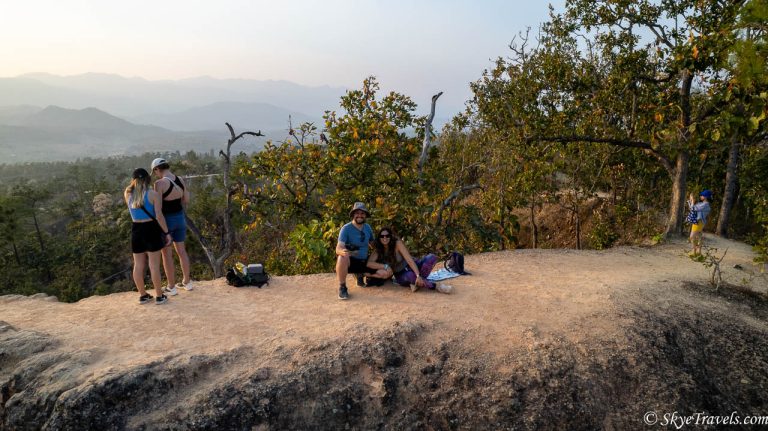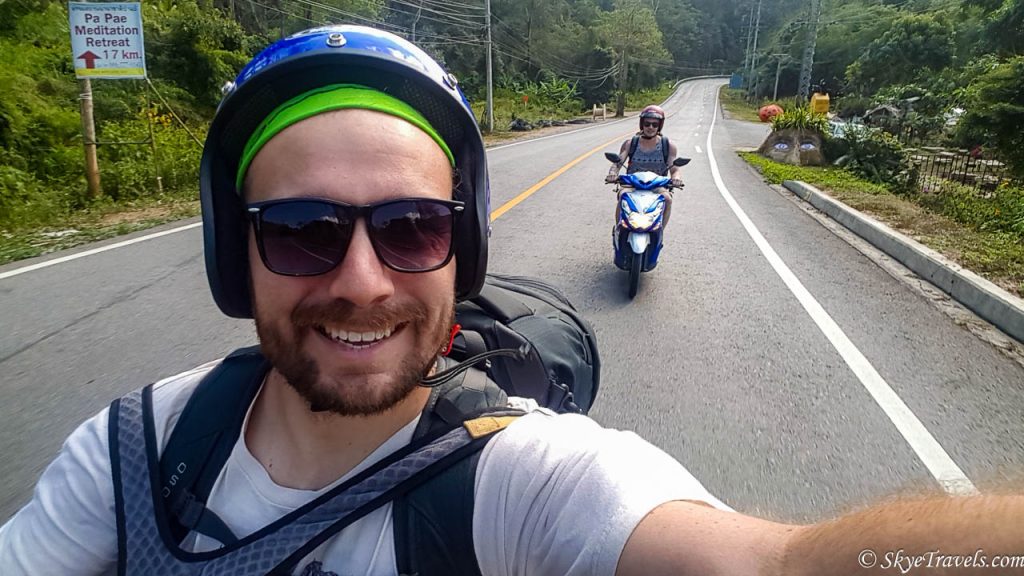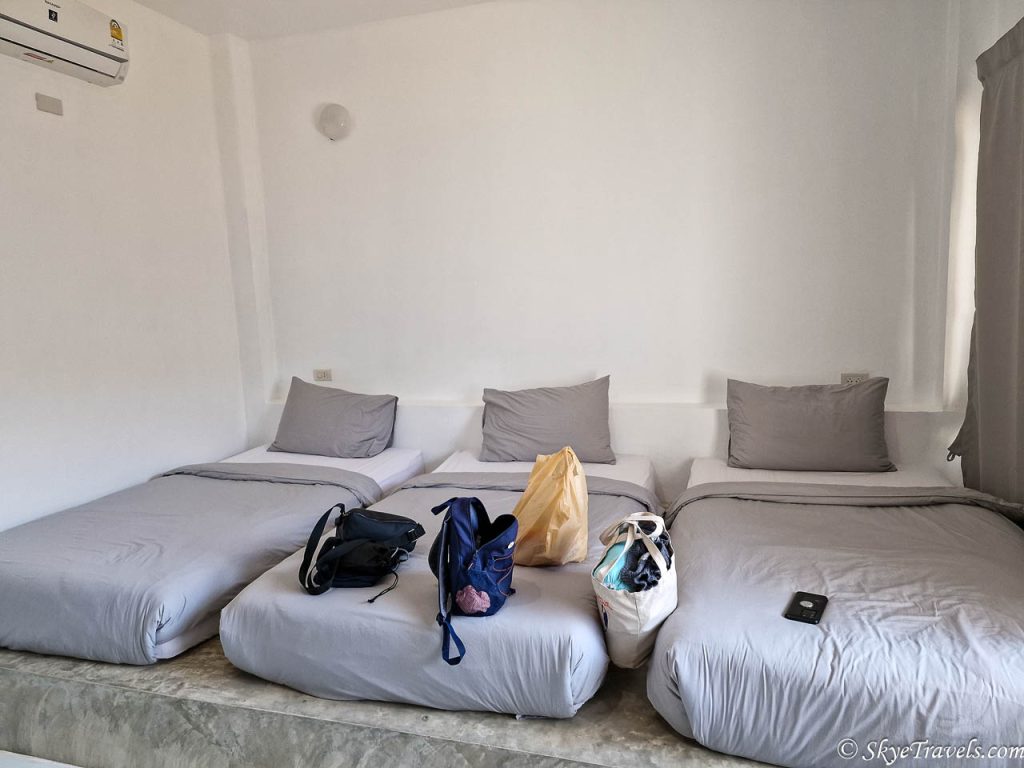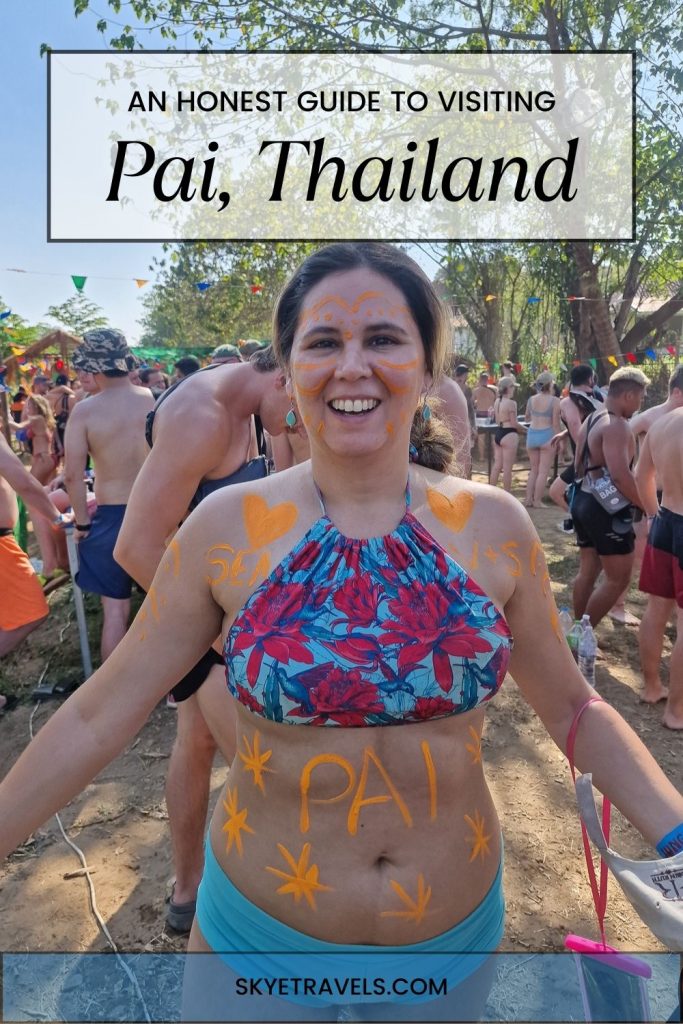One of my favorite excursions from Chiang Mai is to the village of Pai. However, visiting in 2025 is nothing like visiting in 2016. Here’s my complete guide to Pai, including some important factors to keep in mind and some activities you can’t miss.
Pai has changed enormously over the years, and my visit in 2024 was nothing like my first visit in 2016. Despite the town’s significant growth, the landscape is as beautiful as ever, and I would still highly recommend that everyone in Northern Thailand put Pai on their itinerary.
How to Get to Pai from Chiang Mai
Perhaps the most famous feature of Pai is not the village but the road to get there. The road from Chiang Mai to Pai is known as the road of 1,000 curves. In truth, it’s “only” 762 curves. It’s also one of the deadliest roads in the world, not because it’s extremely treacherous, but because it claims more lives than almost any other road.
That mortality rate shouldn’t put you off going to Pai. The high number of incidents is partially due to how busy the road is. There are other roads everyone avoids because the conditions are too dangerous. However, on my first visit to Pai in 2016, my brother and I rode two scooters at a good speed the entire way. Sure, a couple moments were a bit tense, but I’m still here to write this article.
I personally think renting a scooter is the better option, even though I don’t recommend renting scooters in Thailand. It gives you more freedom, and you’ll most likely need to rent a scooter anyway when you arrive in Pai. But please, please, please, do not rent a scooter to get to Pai or once you’re there if you’re not an experienced rider.
Two companies, Aya and Prempracha Transport, have regular vans to Pai each day, but they get sold out well in advance. In fact, if you’re in Pai, don’t try to book a van back to Chiang Mai last-minute in the high season. We had to wait two days to get a ride back to Chiang Mai. Better to have the freedom to get back with a scooter.
Finding the Best Accommodations in Pai
On my first visit to Pai in 2016, I don’t remember more than a few dozen options for accommodations. Nowadays, you have hundreds to choose from. You can stay in hostels in the town center, resorts on the north side of the river, or beautiful bungalows in the rice paddies outside of town. You also have a huge price range, from just a couple of dollars a night to hundreds.
Pai Circus Hostel
On my two trips to Pai, I stayed at several different accommodations. In 2016, my brother and I stayed at the world-famous Pai Circus Hostel. I can’t say it’s the best accommodation in Pai, but it was certainly a unique experience. Every night, they have classes for circus acts such as fire twirling, hula hoops, juggling, etc. They also have a really nice infinity pool overlooking the village.
We had a private hut together, but the number of mosquitoes made the stay less pleasant. Perhaps the best part of the hostel was the camaraderie each night.
KK Hut Guesthouse
On our last night, we decided to switch for better accommodations, so we went across the street to the KK Hut Guesthouse. Our family hut with a massive bed was far more comfortable and quiet. The guesthouse also had a couple of litters of kittens roaming about, which was the cutest thing ever.
Paddy Fields Haven
The first accommodation Vanesa and I had in Pai was at the Paddy Fields Haven. This is a collection of five bungalows on the rice fields on the far side of Pai Airport. Our cabin on stilts was super comfortable. We loved hanging out with the cats, and we had a wonderful bonfire at night for s’mores and drinks. It’s a bit too far to get to on foot, so you’ll need a scooter to stay there. Reserve on Booking.com or Agoda.
Canary Guesthouse
By far our favorite place to stay in Pai is the Canary Guesthouse. This group of cabins is located on the north side of the river, just a couple hundred feet from the Pai Walking Street. That means you’re close enough to walk into town in a few minutes while also far enough away not to hear the loud music at the bars all night long.
They advertise having 14 rooms, but I think they have more now. We spent one night in a small, double-bed cabin and then moved into a much larger family room with a huge bathroom, three comfortable beds, and plenty of space to work. Along the river is a nice outdoor patio for working, eating, or just relaxing.
Canary Guesthouse is not the cheapest option in town, but certainly not the most expensive either. We went during the high season and paid about $25 a night. In the off-season, rooms are available for just $15 per night. Check Booking.com or Agoda for current deals.
Best Restaurants and Cafes in Pai
Although Pai is a tiny village, the town center and surrounding countryside have dozens of cafes, restaurants, and bars. The roads outside Pai are lined with famous cafes and street food vendors, although some are famous more for their decorations than for the food or coffee quality.
Lemon Thyme Cafe
Lemon Thyme is a fantastic little cafe with two locations on the main street, not far from the bus station. Both the “Cafe” and the “Backyard” have the same menu with a surprising number of options. I normally like to see a shorter menu as an indication of better-quality dishes, but we visited several times and never had a bad meal. In the end, as do many Asian restaurants, they just mix and match the same few ingredients.
In addition to delicious omelets, bagels, and an amazing crème brûlée, Lemon Thyme offers excellent craft coffee. Much of the coffee produced and used in Thailand is robusta, which is more bitter and has more caffeine. I prefer arabica blends, which Lemon Thyme offers.
Centrico Mexican Restaurant
Vanesa and I found some excellent Mexican food in the center of Pai at Centrico. While some of the dishes are more Tex-Mex, the ingredients are fresh, the portion sizes are excellent, and the drinks on the side are some of the best we found in town. Plus, the prices are very reasonable.
The ceviche was the highlight of our dinner. It was surprisingly good quality for a town far from the coast. I also loved my quesadilla, and I’m still craving to have the pineapple and mint drink again.
Cafe de Pai
Cafe de Pai is another great spot for breakfast or lunch. We had our final meal in Pai there, going for the bacon and cheese melt and a desperately needed iced coffee. In a country full of friendly people, the staff at Cafe de Pai is amazingly welcoming.
Pai Night Market
Of course, the best place to eat in Pai is at the Pai Night Market, which runs along the entire walking street from about 5 to 10 p.m. The market has dozens of restaurants, stalls, and food trucks. Pa Kham Road, branching north of the walking street down to the river, also has some particularly good options.
Throughout the week we were in Pai, we ate at over a dozen of the vendors in the Pai Night Market, often getting three or four items per night. Our very first dinner was at Goyza Queen, which is easily one of the best and also most popular stops in the market. We also tried kebab wraps, chocolate-covered strawberries, khao soi (the best soup in the world), khai jiew (a Thai egg omelet), burgers, popcorn, smoothies, ginger tea (super strong), and many more items.
Essential Activities in Pai
Pai Canyon
Pai Canyon is one of the area’s more interesting and unique attractions. However, it’s not much of a canyon—if anything, it’s a reverse canyon! Several sandstone ridges rise above the jungle canopy, with tops wide enough to carefully walk across.
The canyon is located five miles south of the town center. On a scooter, it’s about a 15-minute drive. Otherwise, you can jump on one of the countless tours going to the canyon. Admission is free—it’s just a hike up a hill. When visiting, do not wear sandals. Shoes are essential and can be the difference between life and death on the sandy, slippery trails.
Personally, I like to go to the end of the southern trails for the best photos, but one particular section of the path to get there is quite hazardous. Instead, consider staying closer to the canyon’s entrance. It only takes a couple of minutes to climb the stairs from the parking lot to the first viewpoint.
Although you can visit the canyon any time, this is where you’ll want to watch the sunset as the sun drops beyond the far mountains. The further you head out on the trails, the fewer the crowds are. Just don’t enjoy twilight for too long, or you might have difficulty getting off the trails in the dark.
Hot Springs
Pai has a couple of hot springs to enjoy, one a bit more accessible and therefore more touristy than the other. Most organized tours will bring guests to Tha Pai Hot Springs, south of town near the Pai Canyon. As you can imagine, this one is more crowded and also far more expensive.
The first time I visited Pai, I enjoyed Sai Ngam Hot Springs, 10 miles north of town. These hot springs are not nearly as crowded as the main one, but also not quite as warm, and the drive to get there, especially on a scooter, is very treacherous. Sadly, these springs used to be free, except for a small fee (about 40 baht) to enter the forest. Now, tourists must pay 400 baht plus the vehicle fee—30 baht for scooters.
Instead, consider paying for a tour package from Pai. For 400 baht, you can visit the hot springs, the canyon, and a cafe stop. Although the canyon is free, you’ll save on the cost of a scooter rental.
Nam Lod Cave
Another worthwhile attraction to do in Pai is the Nam Lod Cave, one of the largest caves in Thailand. You can book a tour or go by yourself with a scooter. Just know that it’s a very long ride, and the road is not for beginners. As such, tours are a solid option and reasonably priced, too.
Nam Lod Cave is 30 miles north of Pai and takes more than an hour by scooter. The entrance fee is 600 baht per group of up to 3 people. If you are alone or with a partner, just find one or two more people to split the entrance fee. The fee includes a boat tour through the cave to the far end and a guide to show you many of the features in the cave. You can’t enter the cave without a guide.
Tubing on the River
Finally, a relatively new activity in Pai is tubing down the Pai River. I wish this had been available in 2016 when I was there with my brother. Recently, two tubing companies were established. We joined over six hundred riders, the most the company had had in a single day. Somehow, they still had enough tubes for everyone.
Despite the three makeshift bars and clubs along the river where the riders stop, the activity promotes itself as family-friendly. I saw quite a few kids and families riding down the river, but I also saw kids of all ages at the crazy New Year’s Eve party on Koh Chang. Despite barely drinking any alcohol, Vanesa and I still had a fantastic time. Tubing on the Pai River is one of the top activities I’d recommend in Pai.
Just like anywhere else in Pai and Thailand, you must follow local laws and customs when tubing on the river. This includes dressing correctly, not engaging in indecent activities in public areas, consuming alcohol responsibly, and so on. Both companies are taking measures to ensure all passengers follow the rules so the activity remains available.
A Guide to Pai Summary
I honestly believe that everyone visiting northern Thailand should make an excursion to Pai from Chiang Mai. If you have limited time, then merely go to Pai for two or three days. Otherwise, consider spending a week or two relaxing in this beautiful village. Aside from everything I’ve mentioned above, you’ll find plenty of hiking routes through the mountains and jungles, countless other wonderful cafes, viewpoints, and more.
Budget-wise, things certainly aren’t as cheap as they used to be in Pai, but neither are they anywhere else in Thailand. If you’re on a tight budget, you can get away with spending about $15 per day in Pai. If you’d rather have some nicer accommodations, premium activities, and better restaurants, you can easily spend about $50 per day (not including alcohol). More than that would be a waste of money.
My biggest recommendation for visiting Pai is to book your transportation to and from the town well in advance. Don’t expect to get a last-minute bus in either direction in the high season. It’s also a good idea to book your accommodations well in advance, especially in the busy months.
Speaking of which, the high season for Pai is roughly November through March. That also coincides with the (slightly) colder months. Pai is high in the mountains and gets considerably colder than Chiang Mai. In fact, Pai is the only place in Thailand where I’ve been cold with only shorts and a t-shirt. Make sure to bring something long-sleeved and pants, which are also good to wear when riding a scooter.
Further Reading
If you’re looking for other activities in Northern Thailand, here are a few more articles.
- Follow in My Footsteps: 5 Steps to Properly Feed Bananas to Elephants in Thailand
- The New Chiang Mai Water Park at the Grand Canyon Quarry
- Follow in My Footsteps: Explore the Temples Outside Chiang Mai Old Town
- Follow in my Lost Footsteps – Stumbling Upon Huay Kaew Waterfall
- Spelunking (Cave Exploration) and Hot Springs near Chiang Mai
- Cliff Jumping at the Chiang Mai Grand Canyon
- Getting Lost in a Jungle in Thailand
- Conquering the Doi Suthep Jungle
- 5 Amazing Trips from Chiang Mai, Thailand
- A Guide to Mae Salong and Wang the Put Tan Tea Plantation: The Perfect Chiang Rai Excursion
This post may contain affiliate links. These links help give me the wherewithal to continue traveling at no additional cost to you. For more information, click here.
























